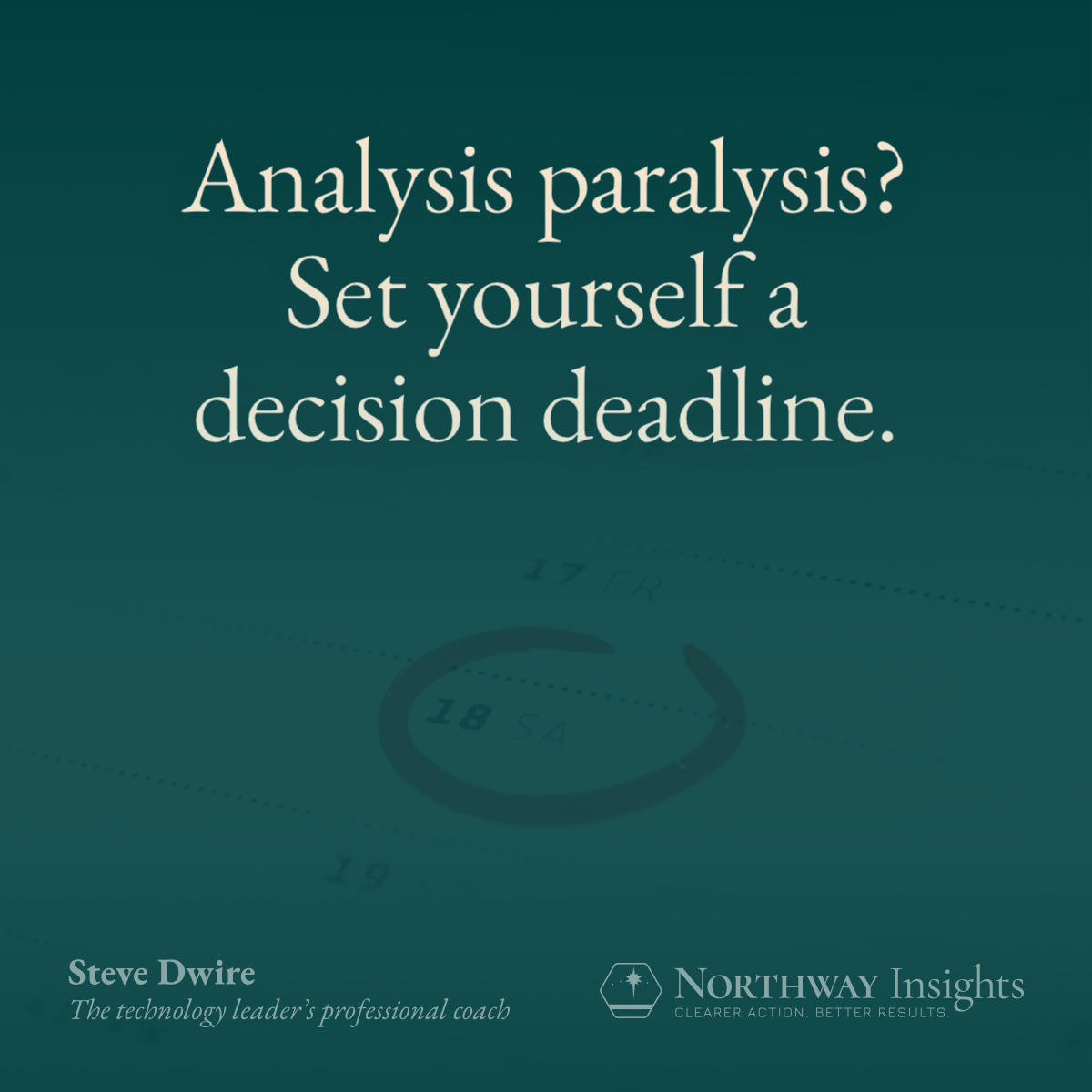I was asked, “How do I stop overthinking this decision?”
It’s not that the choice was unimportant. In a few years, it would lead to what Jeff Bezos calls a “Type 1” decision – one that can’t be reversed. But the immediate options were reversible “Type 2” decisions. (See my earlier musings on Type 1 and Type 2 decisions for context: https://www.northwayinsights.com/2022/11/decision-making-for-hyper-analytical-people-like-me/)
The permanent decision was probably years away, but she felt the burden to get it right immediately.
The weight of it consumed her mind. She constantly asked herself, “Should I be changing course on this?” Her obsession with the question started to impact other responsibilities and relationships.
“How do I stop overthinking?” she asked.
Here’s what I knew about the situation:
👉 Whatever course was chosen now could be reversed if new evidence arrived.
👉 Staying on the current course was uncomfortable while it forced her to grow.
👉 Staying on the current course also created opportunities that she found highly fulfilling.
👉 I suspected there was still more growth for her on the current course.
👉 She suspected that the current course may be generating a greater commitment to what might be the wrong permanent choice later.
👉 The longer she sat in her indecision, the less effective she was in all other areas of life.
I once had a mentor tell me, “Steve, it doesn’t matter so much *what* we decide right now. What matters is *that* we decide.” I believe the same idea fit her current paralysis.
So, she created a decision deadline in the form of a calendar appointment with her advisors for a few days later. Until then, she would observe any new evidence that might influence a decision, but she would also refuse to spend time considering how it would affect the final judgment.
As the burden of the impending decision invaded her thoughts and interrupted the rest of her life, she reminded herself that there was an appointed time on the calendar. The decision would get made then, not now.
At that meeting, one of three classes of decisions could be made:
- She could commit to changing course.
- She could commit to staying on the current course until new evidence invited a new decision.
- She could commit to the current course for now and set a new date to re-evaluate, committing again to not second-guess the choice until that new appointed time.


Leave a Reply